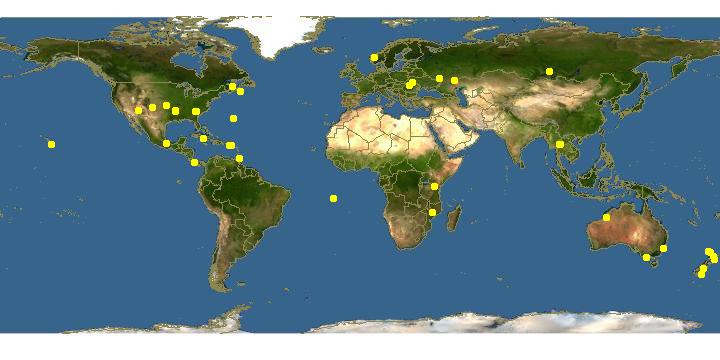
Click on map for details about points.
|
|
Overview | |
Cultivated on hay infusion agar along with a food organism. Satisfactory food organisms are Flavobacterium sp., Escherichia coli, Aerobacter aerogenes, and a mixture of Phoma conidiigena and Flavobacterium. Sporocarps are 38-88 µ tall. Stalks are 14-45.5 µ long. Sporangia are 17-48 µ in diam. with 1-8 spores (4-spored sporangia are most common). The spore gives rise to a single amoeba which is quite broad during migration, 28.6-62.1 x 34.5-89.7 µm, and shows a distinct hyaloplasmic anterior margin. Posteriorly, fine filose projections are produced. Amoebae are mostly 1-4 nucleate, with uninucleate cells predominating. The nuclei are particularly noteworthy in having numerous peripheral small nucleoli. Thus, the nucleus differs markedly from that of myxomycetes, which has a single large central nucleolus. Flagellated cells have not been observed. Sheath, spore walls, and cyst walls give a positive test for cellulose in chloriodide of zinc. Cysts uninucleate to multinucleate and irregular.
|
|
|
Links to other sites | |
|
|
|
Acknowledgements | |
The Eumycetozoan Project -- working to understand the ecology, sytematics and evolution of myxomycetes, dictostelids and protostelids -- the true slime molds.
Sponsored by grants from the National Science Foundation.
|
|
|
Feedback |
Please send any corrections and comments about this page to John Shadwick
Department of Biological Sciences, University of Arkansas, Fayetteville, AR 72701, USA
email: jshadwi@uark.edu
phone: USA-479-575-7393.
|
|
| Supported by | |
Updated: 2024-04-26 17:33:45 gmt
|